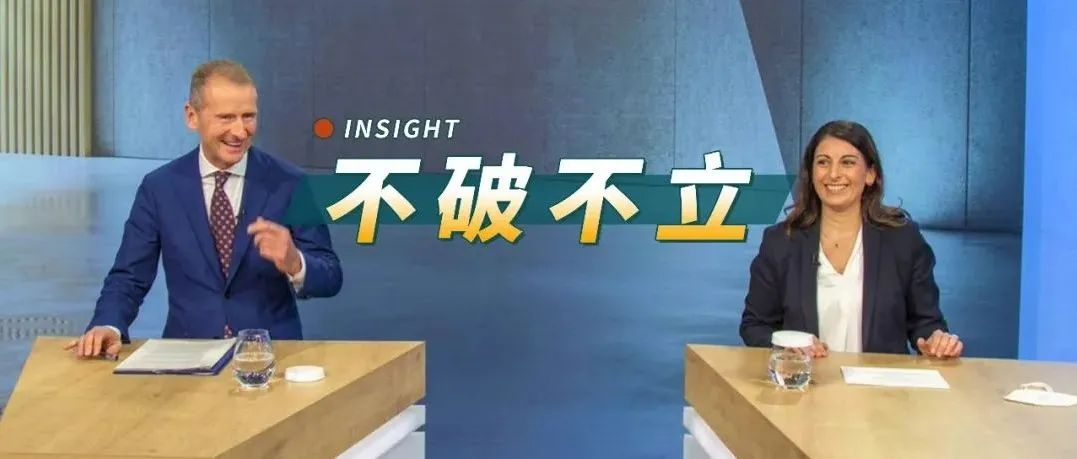Author: Chris Zheng
On December 9, 2021, the leader of the world’s largest multinational automobile group was appointed. Volkswagen Group’s official Twitter timely posted such a photo.
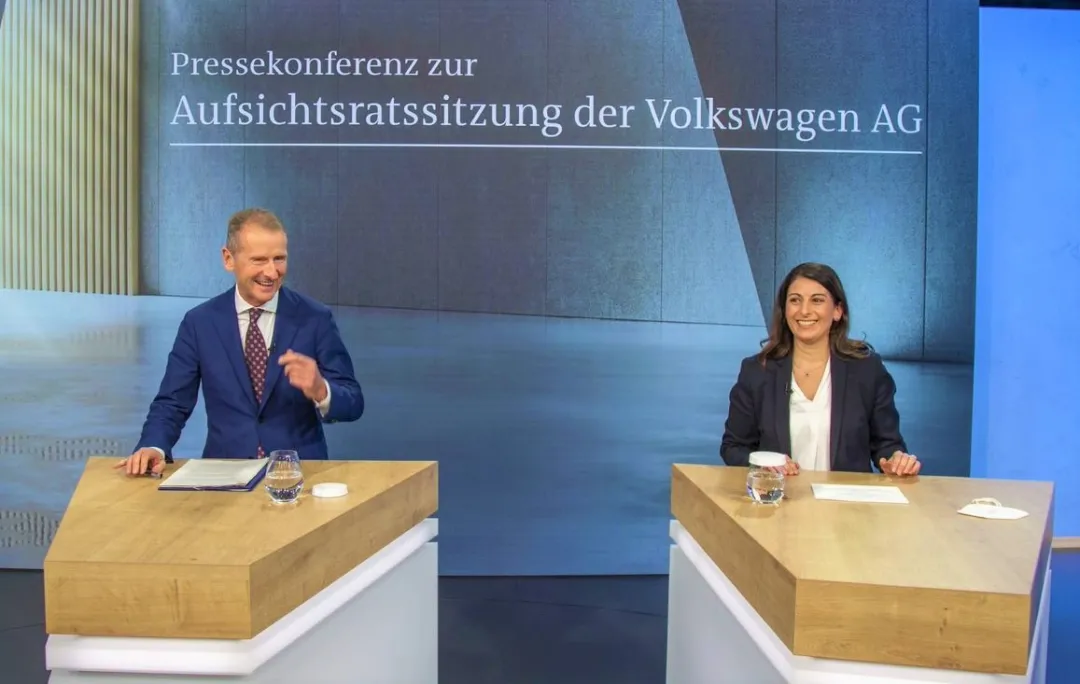
Volkswagen Group CEO Herbert Diess and Group Works Council Chairman Daniela Cavallo talk happily――
In fact, Volkswagen Group Supervisory Board Chairman Hans Dieter Pötsch is standing next to Diess.
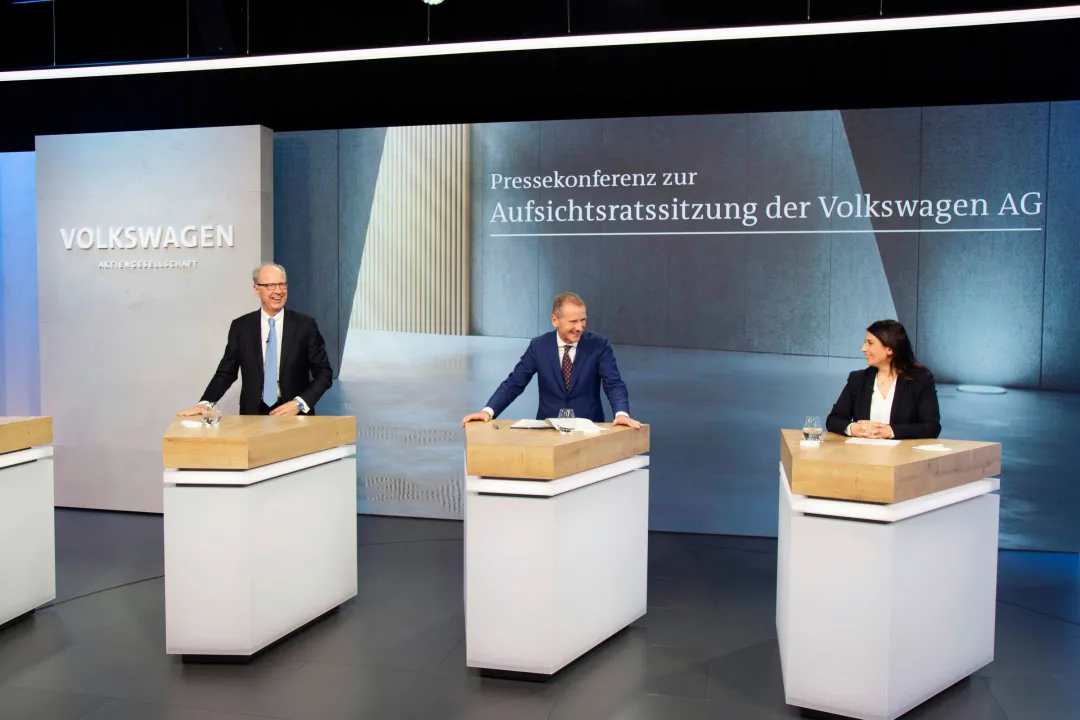
But Volkswagen’s communication department no longer has time for Hans. At this moment, Volkswagen urgently needs to convey a voice to the outside world: the confrontation between Diess and Daniela is negotiable, which is more important than whether the Supervisory Board Chairman appears or not!
Reducing power
The situation was once extremely unfavorable to Diess.
Two weeks before the Supervisory Board’s decision was announced, members of Volkswagen’s Supervisory Board held continuous four-hour meetings until 10 pm on whether Diess should stay or leave, but no consensus was reached.
Later, the German media Automobilwoche revealed that the Supervisory Board members did not reach a consensus on whether Diess should stay or leave. The two major families supported Deiss, but the group’s works council, Germany’s metalworkers’ union IG Metall, and the third-largest shareholder Qatar were no longer interested in Diess.
A survey conducted by Civey with 5,000 participants showed that only 18% of respondents supported Diess to continue as the CEO of the Volkswagen Group. 38% of respondents publicly opposed, and 25% of respondents believed that Diess “should not lead Volkswagen under any circumstances.” Diess is now in a very difficult position.
This has made the role of Lower Saxony in the Supervisory Board awkward and subtle. On the one hand, Lower Saxony has not historically expressed its own will and has always followed the positions of the two major families. On the other hand, one of Lower Saxony’s requests when it supported Diess’s renewal in July 2021 was to require Diess to change his management style and do more communication. However, Diess has not contacted the governor since then.
In the end, Lower Saxony’s two representatives, Bernd Althusmann, Minister of Economic Affairs, Labor, Transport, and Digitalization, and Federal Minister Stephan Weil, withstood the pressure.In the Supervisory Board resolution on December 9, 2021, Diess once again became the highest executive officer in charge of managing Volkswagen Group.
Of course, the cost is inevitable.
On April 13, 2018, Diess was promoted to CEO of Volkswagen Group and launched the largest-scale reform in the history of Volkswagen through a speech. In that reform, Diess reorganized Volkswagen’s structure into a 6 + C architecture. Here, C is the abbreviation for China, which means that in addition to the six major business departments, the group’s largest overseas market, China, is independently led by a single organization established by the headquarters.
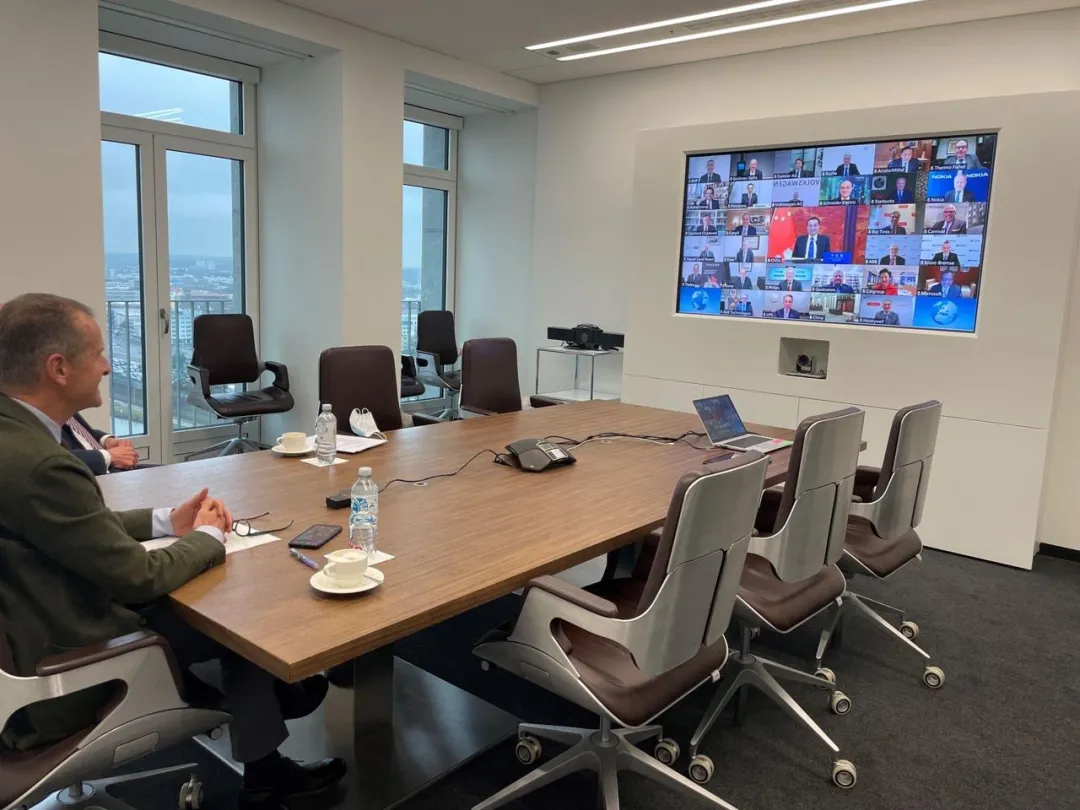
All brands of the Volkswagen Group are divided into three matrices: mass production, luxury, and ultra-luxury. The truck and bus departments are preparing for an IPO to raise enough funds for the reform.
At that time, Diess gained the trust of the supervisory board. The chairman of the supervisory board, Pötsch, said, “In the process of transformation of the Volkswagen brand, Diess demonstrated the speed and rigor of his implementation of radical transformation and achieved impressive results.”
Correspondingly, Diess won everything he wanted from the supervisory board: in addition to being the CEO of the group, Diess also concurrently served as the CEO of Volkswagen Passenger Cars, and led the volume brand matrix (including Volkswagen, Skoda, and Seat) and group R&D work. In addition, “due to the special significance of vehicle networking, vehicle IT business will also be personally led by Dr. Herbert Diess.”
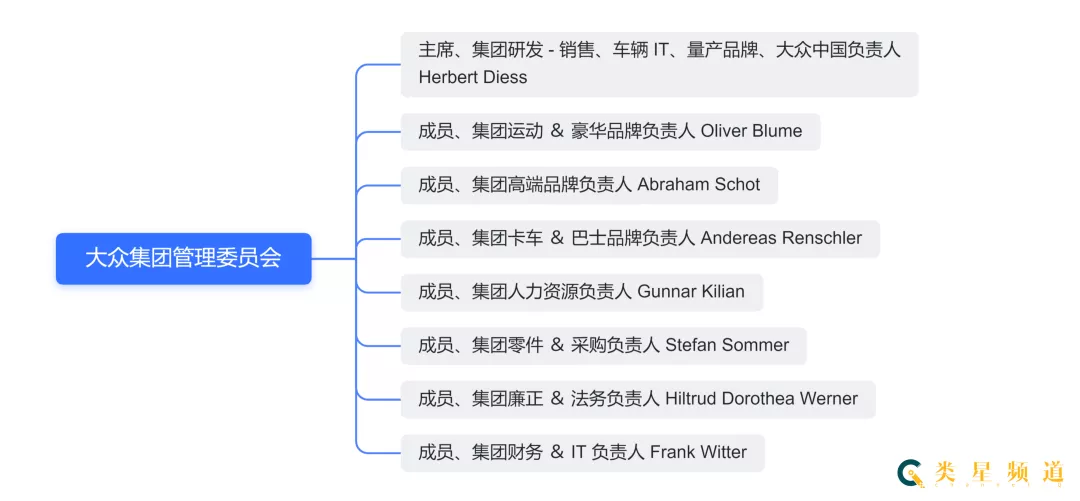
With the retirement of Jochem Heizmann, former President and CEO of Volkswagen China, before November 2018, Diess began to directly lead Volkswagen China on behalf of the group.
Group R&D, vehicle IT, volume brand matrix, Volkswagen Passenger Cars, and Volkswagen China—all of these resources and powers are at their highest peak under Diess’s leadership.
Looking at the new structure announced on December 9, 2021, which will be completed by August 2022, the increase in the number of members of the Volkswagen Group Management Committee is largely due to the “disintegration” of Diess’s duties.
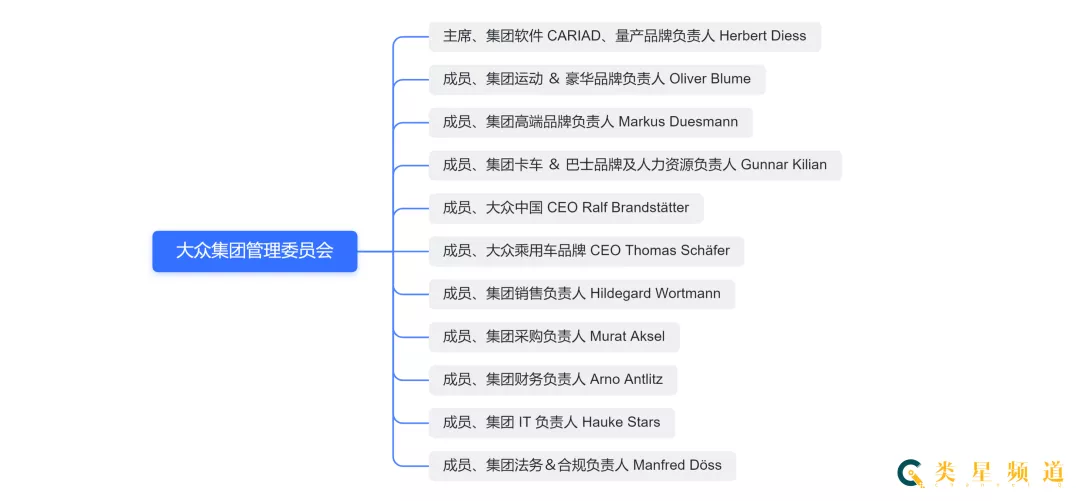 ## Turning inward
## Turning inward
Reform is never easy. In the past five years, in addition to the aforementioned organizational restructuring, Diess has split his responsibilities between finance and personnel, achieving a literal “restructuring” of the Volkswagen Group.
Let’s start with the financial aspect. In Planning Round 67, a five-year strategic plan for the Volkswagen Group formulated in 2018, Diess proposed a total investment plan of €44 billion, encompassing electrification, autonomous driving, mobility services, and digitalization of vehicles and factories, with €30 billion allocated to electrification.
For comparison, Toyota, a company of similar size, announced an electrification plan in December 14, 2021, with a total investment of $35 billion by 2030. Does this mean that Volkswagen has doubled down on its 2018 five-year plan?
In addition, in this round of restructuring, Ralf Brandstätter has joined the Group Management Committee and will serve as CEO of Volkswagen China starting August 1, 2022, while Thomas Schäfer has also joined the Group Management Committee and will take over the Volkswagen Passenger Cars brand from Ralf Brandstätter beginning April 1, 2022. Although Diess is still in charge of the Group’s vehicle brand matrix, the addition of Ralf and Thomas to the committee responsible for the brand matrix will greatly restrict Diess’s freedom of action.
As early as November 15, 2019, Diess transferred leadership of the Group’s R&D to Markus Duesmann, who was also a member of the Group Management Committee. At the same time, Diess began to lead the Group’s sales. But in this latest restructuring, Hildegard Wortmann has been promoted to a member of the Volkswagen Group Management Committee, taking over from Diess as head of Group sales.
Diess’s shrinking role is intriguing. The only business now firmly in Diess’s hands is vehicle software. This old auto man, who has been in the German auto industry since 1989, seems to have little attachment to vehicle-related businesses as he resigns step by step. This has become an interesting footnote to Volkswagen’s transformation.In the 2019, 2020, and 2021 Planning Rounds 68, 69, and 70 approved by Volkswagen’s supervisory board, Diess ramped up investment like a gambler, reaching as much as €60bn, €73bn, and €89bn respectively. The latest €89bn investment plan accounts for 56% of Volkswagen’s total investment of €159bn over the next 5 years.
This will put enormous financial pressure on Volkswagen. As early as November 2019, Diess openly stated that the shift to electrification requires resources, which must be provided by Volkswagen’s traditional business (internal combustion engine vehicles). Reuters reported that Volkswagen is preparing to spin off the Porsche brand for a separate listing to raise funds for the group’s transformation.
At an employee meeting on November 4, 2021, Diess bluntly exclaimed that Tesla has unlimited access to money and resources due to its high valuation. Diess’ transformation investment plan is not only a direct challenge to Volkswagen’s business development in traditional fuel and hybrid vehicles, but also places extreme pressure on Volkswagen’s finances.
Clearly, this transformation plan will encounter countless obstacles in actual implementation.
For example, in March 2020, Diess openly called for “fuel cells, internal combustion engines and other low-emission technologies to make the industry unfocused, and electric vehicles are the only technology path that can enable automakers to comply with EU carbon emission laws”, while Ralf, who replaced him as the CEO of the Volkswagen Passenger Cars brand, fully overturned Diess’ proposition: “Internal combustion engines will not disappear. We have always said that we will continue to have different types of propulsion systems that include internal combustion engines and hybrid technology.”
Diess was once in complete control of Volkswagen, which was the prerequisite for a large empire to undergo a drastic treatment. However, when he continued to encounter resistance from unions and supervisory boards, Diess had to choose a new plan of “breaking down functions and cultivating successor candidates”.
Before joining Volkswagen, Diess had been a member of the BMW executive board, just one step away from CEO. After losing the competition for CEO and leaving BMW, former colleagues who once worked with him at BMW became his top priority for reform at the new company.
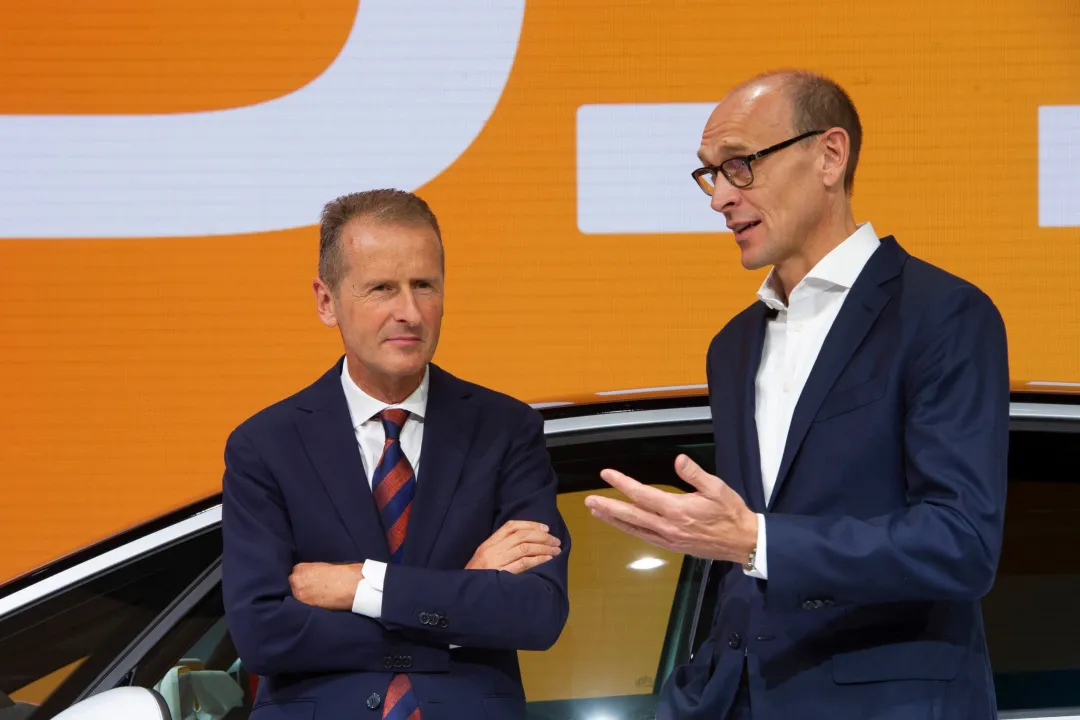 Using the example of the Volkswagen Group’s vehicle software department that Herbert Diess is most concerned about, its head has experienced changes in the past five years, from Herbert Diess, to Christian Senger, then Dirk Hilgenberg, and back to Herbert Diess again. Christian used to lead the development of BMW’s i Series, reporting directly to Diess, who was then a member of BMW Group’s management board and head of research and development.
Using the example of the Volkswagen Group’s vehicle software department that Herbert Diess is most concerned about, its head has experienced changes in the past five years, from Herbert Diess, to Christian Senger, then Dirk Hilgenberg, and back to Herbert Diess again. Christian used to lead the development of BMW’s i Series, reporting directly to Diess, who was then a member of BMW Group’s management board and head of research and development.
However, Christian’s failure in software development on the ID. series models ultimately led to his “exile” from the group. But under Diess’s operation, Dirk, who replaced Christian, is also Diess’s old subordinate and former senior vice president of manufacturing engineering at BMW Group.
In May 2020, Audi announced a new project codenamed Artemis. It is a super project that has the authority to mobilize all the resources of the Volkswagen Group, aiming to create a fully digitalized vehicle with high-level autonomous driving capability through internal entrepreneurship, and become a model for the transformation of the Volkswagen Group’s 12 brands in the future.
The project leader of Artemis is Markus Duesmann, chairman of the supervisory board of Audi and also the head of research and development of the Volkswagen Group’s supervisory board. Of course, for Diess, an important identity of his is the former purchasing and supplier management director of the BMW Group’s management board.
Even in the latest 11-member Volkswagen Group’s supervisory board, where Christian was “exiled” and Dirk still couldn’t enter, Diess’s core team has reached up to four members, including Markus Duesmann, head of the group’s high-end brand, Hildegard Wortmann, head of group sales, Murat Aksel, head of group procurement, and Diess himself.
Therefore, from an external perspective, Diess seems to be losing power step by step and having a hard time, but if you are inside, you will find a completely different conclusion: while responding to the supervisory board’s criticism of “excessive concentration of power” and dismantling himself, Diess has cultivated a powerful core team to accelerate reform.
A Timing Bomb
Has Diess’s crisis been resolved by successfully being re-elected as the CEO of the Volkswagen Group?In the latest five-year strategic plan of Volkswagen Group’s Planning Round 70 on December 9th, 2021, Diess stated that Volkswagen Group is transforming from a traditional car manufacturer to a vertically integrated group with a strong brand portfolio and a world-leading technology platform. The group’s headquarters in Wolfsburg will be the core of this transformation, as only if Wolfsburg succeeds can we maintain our leading position in the long run.
However, Daniela Cavallo, Diess’s arch-enemy and head of the group’s works council, commented that through these resolutions in the Planning Round, the group once again proved that systematic transformation and the sustainable prospect of ensuring employment should be advanced together.
An undeniable fact is that, after the new supervisory board resolution, Diess and Daniela are still saying different things and are far from as friendly as the Volkswagen official Twitter post at the beginning of the article.
It all goes back to the root of Diess’s resignation crisis, to be precise, a sentence.
At the supervisory board meeting in October 2021, Diess said, “If Volkswagen’s electrification process is too slow, we may have to lay off 30,000 people, and this is only in Germany.”
According to the German media Deutsche Handelsblat, shareholders, supervisory board members, and the union were caught off guard when they heard this sentence. Later, Diess convened a three-day meeting of 200 Volkswagen executives from around the world and invited Tesla CEO Elon Musk to join the video conversation.
Diess stated on his personal LinkedIn account that he was glad to hear even our strongest competitor (referring to Tesla) believes that if we go all-out, we can succeed in our transformation.
Stefan Bratzel, director of the Automotive Management Center in Bergisch Gladbach, Germany, said that one thing Diess did that was positive was what he kept repeating, even if no one in Wolfsburg wanted to hear this truth, that Tesla is the new benchmark.
Tesla and many Chinese new automakers have lower production costs, faster speed, and better quality than European standards.# Volkswagen CEO Ralf: Volkswagen must learn from Tesla’s efficiency
Volkswagen’s CEO Ralf said that everything Tesla’s Giga Berlin factory has done in two years would take Volkswagen five years to accomplish. Volkswagen must figure out how to be faster and more efficient, which is where Tesla excels.
Volkswagen urgently needs to reset its strategy for Wolfsburg because the competition with Tesla’s Giga Berlin factory is fierce. Tesla has set a new standard for car manufacturing, making a Model 3 takes less than 10 hours, while it takes over 30 hours for Volkswagen’s Zwickau factory to produce an ID.3 or ID.4.
Diess has been emphasizing the efficiency gap between Volkswagen and Tesla, where Tesla’s Giga Berlin factory plans to produce 500,000 cars per year and Elon Musk plans to recruit 12,000 employees to achieve this goal, while Volkswagen’s Wolfsburg factory currently has a capacity of 700,000 cars per year, but with 25,000 employees.
Breaking and reorganizing the entire process to produce pure intelligent electric cars with fewer parts and more integrated electronic and electrical architecture means that Volkswagen must lay off employees.
Volkswagen’s new project is called Trinity, an intelligent electric car model that will be put into production in 2026. Ralf said Volkswagen hopes to make Trinity the most modern and efficient automobile manufacturing beacon in the world within five years.
However, the group’s general labor union chairman, Daniela, said that the Trinity project was jointly developed with the group’s labor representatives to ensure labor in Wolfsburg remained protected.
After the October turmoil, Diess told Volkswagen employees in an internal video conference that the company did not have plans to lay off 30,000 people, he is negotiating with labor representatives on how to transform the Wolfburg factory, “The emphasis is not on layoffs, but on maintaining competitiveness and acquiring new capabilities in the new world.”
But 30,000 people are like a ticking time bomb, and the CEO of the group is still Diess, and the chairman of the group’s general labor union is still Daniela, with no changes.
Diess is now fully invested in the management of Volkswagen’s vehicle software company CARIAD. On December 9, 2021, the day the resolution was issued, he stated that software will be the differentiated factor that determines how much success Volkswagen group will achieve in the new world of automobiles.Diess recommended “No Rules Rules” written by Netflix CEO Reed Hastings and invited co-author Erin Meyer to share Netflix’s freedom and responsibility culture with CARIAD executives.
Volkswagen Group is also striving to create a work culture that promotes and inspires innovation, particularly within CARIAD. “Our software engineers must stay away from the bureaucracy of the group!” says Diess.
This article is a translation by ChatGPT of a Chinese report from 42HOW. If you have any questions about it, please email bd@42how.com.
